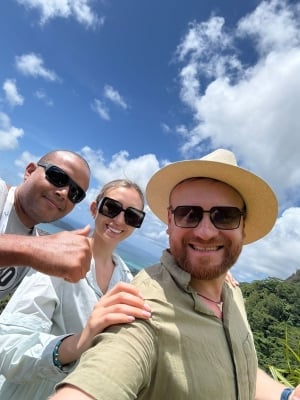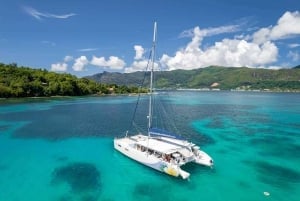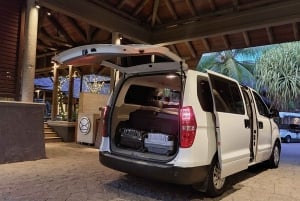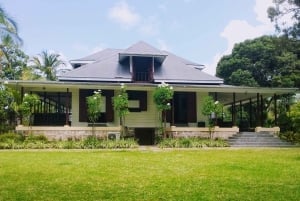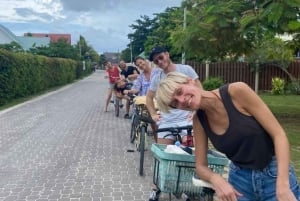Curieuse
CURIEUSE is situated in its own marine park, which reaches 30 metres deep, and only half a mile from the north coast of Praslin and has the proud title of being the second and only other area in the world, along with Praslin, where the 'coco de mer' grows naturally.
Originally named 'Ile Rouge' (Red Island) after the red soil abundant on the ground, it was renamed 'Curieuse' in 1768 after a schooner when the French claimed possession.
In 1771 Curieuse was set alight so the sailors living on the island could collect the rare coco de mer and almost the entire island was destroyed, the ramifications of which can still be seen today. From 1833 until 1965 Curieuse was a leper colony and an educational centre and museum can be visited on Anse St. Joseph.
Today it is possible to visit the island on a day trip (open all year round) as there is no accomodation currently offered on the island. Most people land in the shallow waters of 'Baie Laraie', from where they can take a path past the old ruins of the leper colony, which was partially built in the old Creole architecture, to visit the giant land tortoises (brought in from Aldabra to start a breeding colony) or one of the idyllic bays.
One of the best beaches has been cited as Anse St Jose which is surrounded by a coral reef, otherwise you can cross the island underneath the Curieuse Peak and visit Anse Badamier or finally head towards the south-east where you will find the beautiful small beach of Grande Anse.
The marine section of Curieuse ranges from the shallow waters all the way down to the deepest parts and includes a swamp, rocky shores and sandy beaches.



